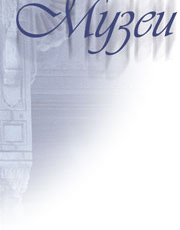
Kazakhstan
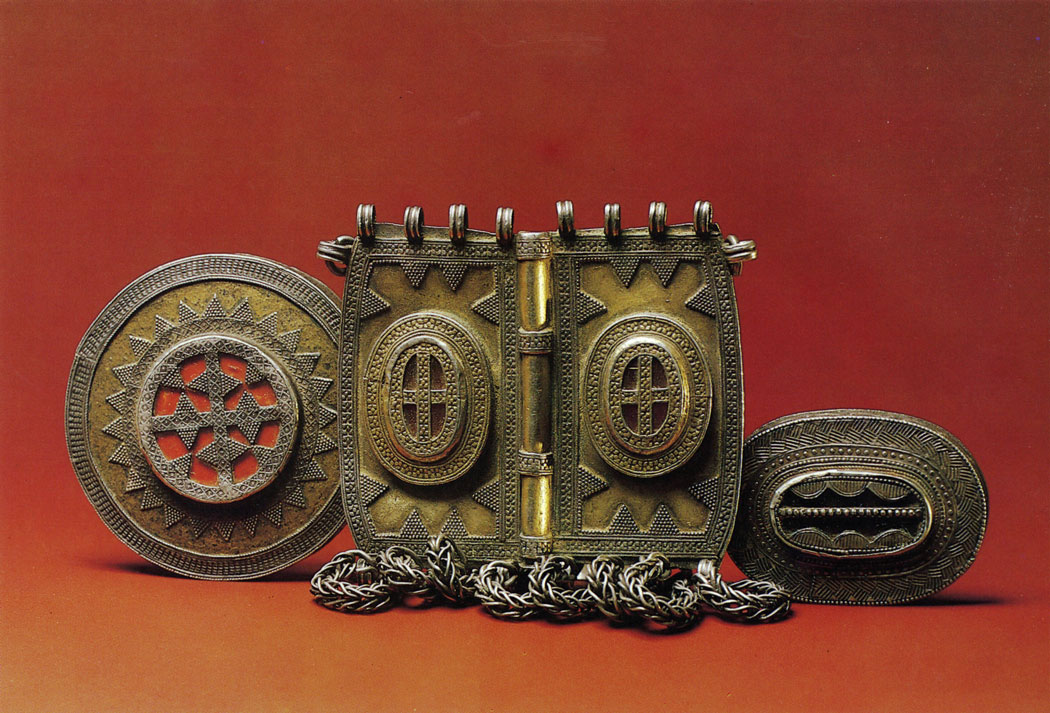
Female ornaments
Mangyshlak, Kazakhstan. Late 19th or early 20th century
Match-maker's ring with a circular bezel
Silver, gilt, decorated with stamped granulation and glass inlays.
6.9 × 6.9 x 4 cm. Inv. No. 8745 III
Detail of onirjiek pectoral
Silver, gilt, decorated with stamped granulation and glass inlays. 6.8 × 8.2 cm. Inv. No.8025 III
Finger-ring with an oval zhuzik bezel
Silver, gilt, engraved and stamped, with glass inlays. 5.5 × 4x0.7 cm. Inv. No.8026 III
Acquired in 1978.
In the second half of the 19th and in the early 20th centuries, the art of gold- and silversmiths of Kazakhstan reached a very high level. Folk craftsmen, zergers, possessed perfect artistic taste and developed their natural sensitivity to the feel of their material-metal. A wide range of articles came out of their workshops-from horse harness to personal ornaments. The material universally used in Kazakhstan was silver, and local masters were skilful in almost all known techniques of silverwork. Kazakh female ornaments, for all their minor particularities distinguishing one type from another, on the whole possess a certain stylistic uniformity. They are usually fairly simple in form and devoid of any elaborate ornamentation. Their decor is always on the moderate side, without any flashiness or excess of detail.
Articles produced in western regions of Kazakhstan, though, stand somewhat apart from the rest of Kazakh jewellery. Their distinctive stylistic features were determined by the art of craftsmen from tribes which had inhabited that area from the very remote past. The articles of this group, decorated, for the most part, with granulation, are unique in their ornamental motifs and the techniques used. At the same time, the motifs characteristic of ornaments from West Kazakhstan-pectorals, rings, bracelets, etc.-are related to the general system of Kazakh decorative patterns and are also found in carpets and textiles. In their style, techniques and ornamentation these articles are also similar to the examples of the so-called "barbaric style" of the 4th and 5th centuries discovered by archaeologists in Kazakhstan. This is accounted for by the continuity of the old traditions of Kazakh art which were inherited by Kazakh jewellers from their remote ancestors, the ancient nomad tribes. They inhabited the Kazakh steppes in the 4th and 5th centuries and played an important part in the formation of the Kazakh people.
Pectorals, which consisted of three plates fastened to each other with chains, and finger-rings with oval bezels are an indispensable part of festive female attire in West Kazakhstan.
Huge finger-rings with circular bezels of archaic shape were worn on two fingers and formed a conventional gift from the bride's mother to the matchmaker. These massive ornaments had either a silver or silver-gilt surface almost entirely covered with granulated geometric patterns consisting of various combinations of triangles, rhombuses and lines and supplemented with large studs of cornelian or red-brown glass.
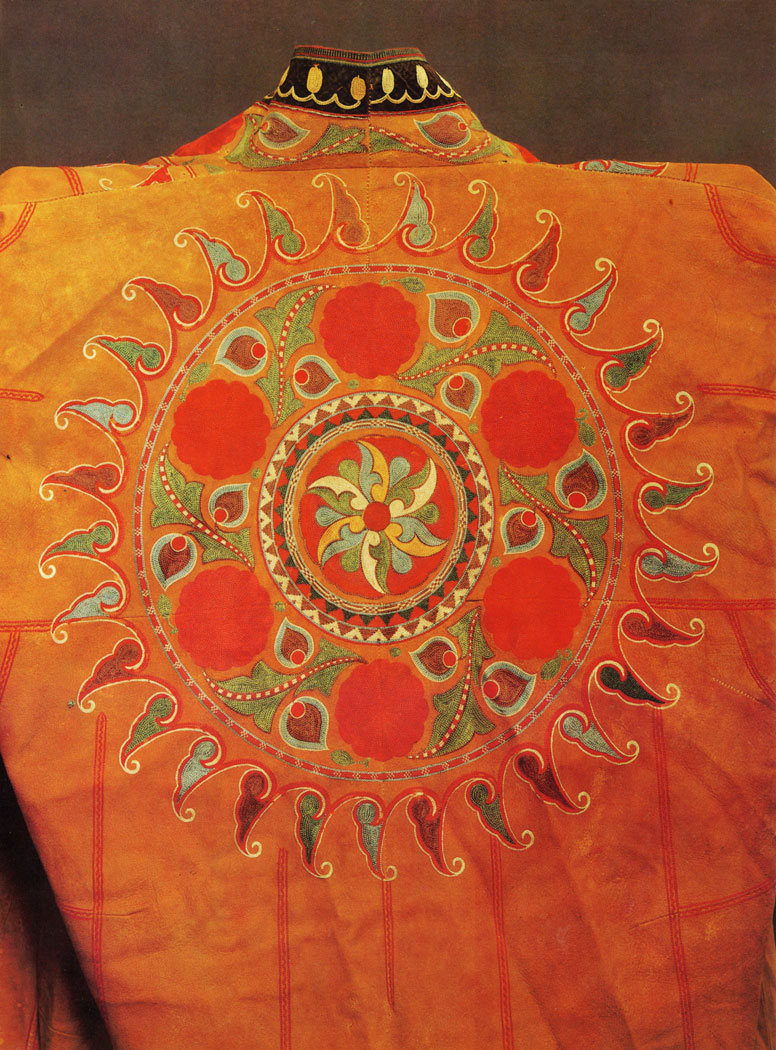
Shapan robe
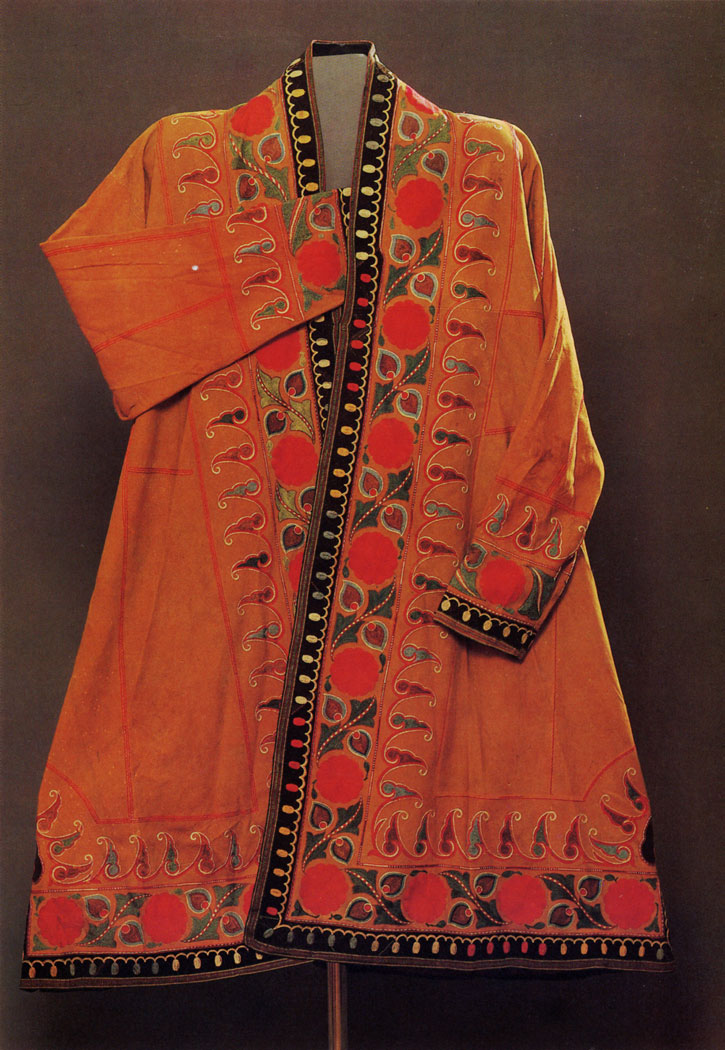
Shapan robe
Kazakhstan. 1870s
Suede, with chain-stitch embroidery in silk.
Length 142 cm, cuff to cuff measurement 214 cm. Inv. No. 3549 III
Acquired in 1950 from a private collection.
In the 18th and 19th centuries, suede clothes decorated with embroidery were rather common among well-to-do Kazakhs. Such loose-fitting simply cut garments answered the canons of Moslem moral code and the concept of decency which dictated a maximum concealment of the forms of the body by flowing folds of the dress. At the same time this cut suited the climate and the way of life of Oriental people: the wide loose robe with slits was convenient wear for sitting on the floor of the yurta (tent) or riding a horse. It was worn in cold weather, as several robes or a warm shirt could be put on underneath, and on a hot day it kept the wearer cool because it was well ventilated.
The robe reproduced here is one of traditional archaic Central Asiatic cut. It is a loose garment which wraps up at the front and slightly widens towards the hem in a trapezium-like fashion. The long wide sleeves, on the contrary, are narrowed down at the cuff. The neck, lapels, cuffs, hem and slits are trimmed with black velvet. The slits on the sides terminate in a stylized fan-like flower. The velvet trimmings are decorated with the embroidered islimi motif-the wave-like stem of a twining plant. The back of the robe is adorned with a large multicoloured floral rosette with a polychrome many-petalled flower in the middle. This motif originated from ancient symbols of the firmament-those of the sun, the moon and stars.
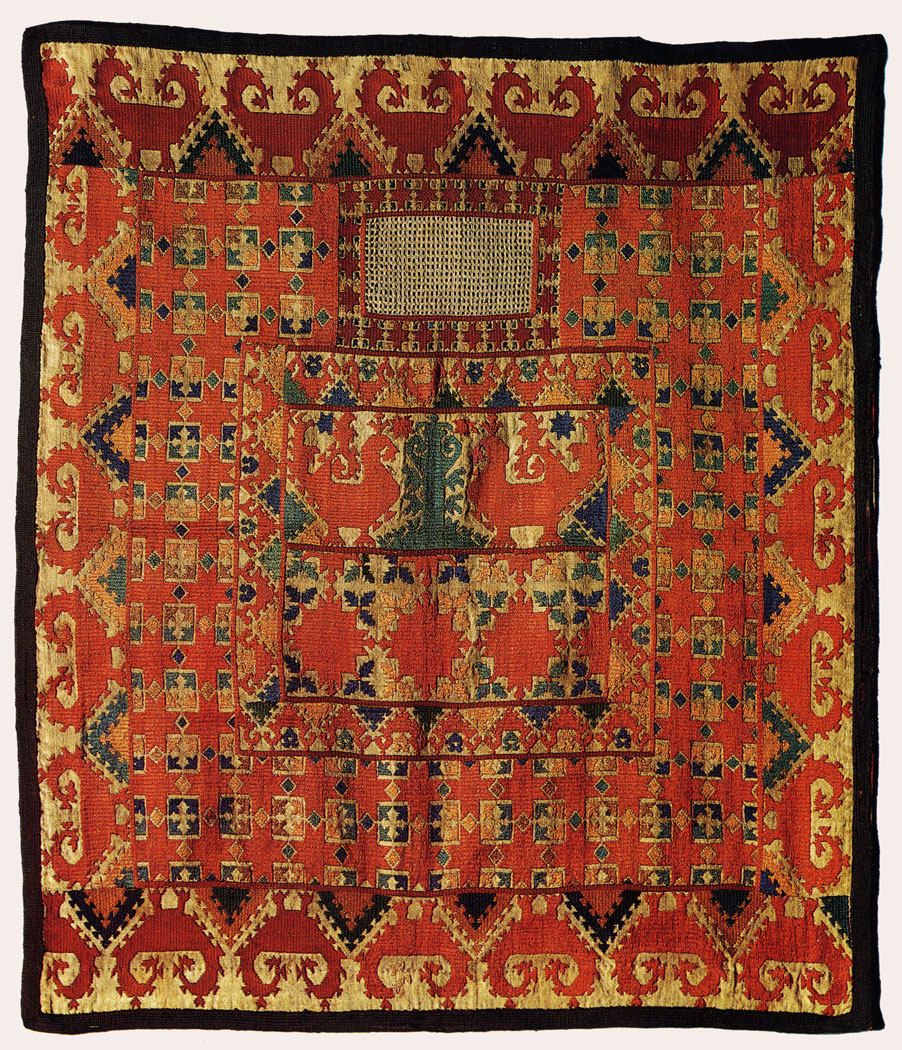
Ruiband veil
Village of Kalom-Khumb (?), Darvaz, Tajikistan. Second half of the 19th century (before the 1870s)
Cotton, with satin-stitch embroidery (pukhtaduzi) in silk.
75 × 65 cm. Inv. No. 3098 III
Acquired in 1946 from a private collection. First publication.
A ruband is a ritual veil which was worn by brides who were supposed to cover their face during the wedding feast and also while moving to their husband's house. During the ruibenik (bride-show) the veil was slightly lifted for the girl's in-laws to see her face.
The ruiband is a rare article which has long ago become the exclusive property of museums. Rubands fell out of use as early as the turn of the 20th century and were to be found only in rich Tajik families where they were passed on as family relics from mothers to daughters. The ritual function of the ruiband determined its artistic symbolism. Its form, its colouring, ornamental patterns and their arrangement were strictly canonized.
This ruiband is the only example of this kind in the collection of the Museum. It is an almost square veil of white home-woven cotton fabric which has gone yellowish with age. A small rectangular net for the eyes is made of white silk and framed with a row of crimson stars-sitora. The central square consists of two sections and has a wide border around it. The top section presents an archaic motif of two heraldi-cally opposed stylized red birds-peacocks or cocks-on either side of the Tree of Life. The bottom section is decorated with large red stars-sitora. The border is composed of three bands. The outer band is adorned with alternating dark-blue, yellow and pale-blue triangles-the tumor (amulet) pattern- and geometrically stylized two-headed birds (tovus, or khurus). The overall pattern of this band is called "the peacock (cock) and the amulet" (tovus va tumor). The ruband is trimmed on the edge with a narrow tape of black silk.
The presence of red, orange, crimson and blue accounted for the traditional name given to the decor of ruibands-guli otash, or guli alou (fiery flower). The red colour was associated by many peoples (including the Tajiks) with powers of Good and was believed to be a protection from evil, while birds were regarded as symbols of fertility.
Belle
By Evgeny Sidorkin (1930-1983). From the cycle On Reading Saken Seifulin. Kazakhstan. 1965
Lithograph.
70 × 57 cm. Inv. No. 24385 КП
Acquired in 1974 from the artist.
An Honoured Art Worker of Kazakhstan and a State Prize Winner, Evgeny Sidorkin was born in the village of Lebiazhye (Russian Federal Republic). He studied at an art school in Kazan (1946-51), at the Academy of Arts in Riga (1951-52) andthe Repin Institute of Painting, Sculpture and Architecture in Leningrad (1952-57). From 1957 he lived and worked in Alma-Ata.
Sidorkin was one of the most eminent graphic artists in Kazakhstan. He took his inspiration from folk art, legends and the history of the Kazakh people. The cycle On Reading Saken Seifulin is thematically connected with the poems of this classic of Kazakh literature. Its imagery is in full consonance with Seifulin's poetic symbolism. The close-up treatment of the figures and faces, a certain roughness of the pictorial surface and the original composition make Sidorkin's characters look like ancient stone statues.
|
ПОИСК:
|
© MUSEUMS.ARTYX.RU, 2001-2021
При использовании материалов сайта активная ссылка обязательна:
http://museums.artyx.ru/ 'Музеи мира'
При использовании материалов сайта активная ссылка обязательна:
http://museums.artyx.ru/ 'Музеи мира'